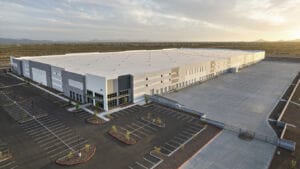After moving upward for two straight months, existing-home sales retreated in April on both a monthly and annualized basis, according to the National Association of Realtors. All four major regions saw no gain in sales activity last month.
Total existing-home sales, https://www.nar.realtor/existing-home-sales, which are completed transactions that include single-family homes, townhomes, condominiums and co-ops, decreased 2.5 percent to a seasonally adjusted annual rate of 5.46 million in April from 5.60 million in March. With last month’s decline, sales are now 1.4 percent below a year ago and have fallen year-over-year for two straight months.
Lawrence Yun, NAR chief economist, says this spring’s staggeringly low inventory levels caused existing sales to slump in April. “The root cause of the underperforming sales activity in much of the country so far this year continues to be the utter lack of available listings on the market to meet the strong demand for buying a home,” he said. “Realtors® say the healthy economy and job market are keeping buyers in the market for now even as they face rising mortgage rates. However, inventory shortages are even worse than in recent years, and home prices keep climbing above what many home shoppers are able to afford.”
The median existing-home price for all housing types in April was $257,900, up 5.3 percent from April 2017 ($245,000). March’s price increase marks the 74th straight month of year-over-year gains.
Total housing inventory at the end of April increased 9.8 percent to 1.80 million existing homes available for sale, but is still 6.3 percent lower than a year ago (1.92 million) and has fallen year-over-year for 35 consecutive months. Unsold inventory is at a 4.0-month supply at the current sales pace (4.2 months a year ago).
Properties typically stayed on the market for 26 days in April, which is down from 30 days in February and 29 days a year ago. Fifty-seven percent of homes sold in April were on the market for less than a month.
“What is available for sale is going under contract at a rapid pace,” said Yun. “Since NAR began tracking this data in May 2011, the median days a listing was on the market was at an all-time low in April, and the share of homes sold in less than a month was at an all-time high.”
Realtor.com®‘s Market Hotness Index, measuring time-on-the-market data and listings views per property, revealed that the hottest metro areas in April were Midland, Texas; Boston–Cambridge–Newton, Mass.; San Francisco–Oakland–Hayward, Calif.; Columbus, Ohio; and Vallejo–Fairfield, Calif.
According to Freddie Mac, the average commitment rate for a 30-year, conventional, fixed-rate mortgage increased for the seventh straight month to 4.47 percent in April (highest since 4.49 percent in September 2013) from 4.44 percent in March. The average commitment rate for all of 2017 was 3.99 percent.
“With mortgage rates and home prices continuing to climb, an increase in housing supply is absolutely crucial to keeping affordability conditions from further deterioration,” said Yun. “The current pace of price appreciation far above incomes is not sustainable in the long run.”
First-time buyers were 33 percent of sales in April (highest since last July), which is up from 30 percent last month but down from 34 percent a year ago. NAR’s 2017 Profile of Home Buyers and Sellers – released in late 2017 – revealed that the annual share of first-time buyers was 34 percent.
“Especially with mortgage rates going up in recent weeks, prospective buyers should visit with more than one lender to ensure they are getting the lowest rate possible,” NAR President Elizabeth Mendenhall, a sixth-generation Realtor® from Columbia, Missouri and CEO of RE/MAX Boone Realty. “Receiving a rate quote from multiple lenders could lead to considerable savings over the life of the loan. Ask a Realtor® for a few recommendations of lenders to contact to get a quote.”
All-cash sales were 21 percent of transactions in April, which is up from 20 percent in March and unchanged from a year ago. Individual investors, who account for many cash sales, purchased 15 percent of homes in April (unchanged from last month and a year ago).
Distressed sales – foreclosures and short sales – were 3.5 percent of sales in April (lowest since NAR began tracking in October 2008), down from 4 percent last month and 5 percent a year ago. Three percent of April sales were foreclosures and 0.5 percent were short sales.
Single-family and Condo/Co-op Sales
Single-family home sales declined 3.0 percent to a seasonally adjusted annual rate of 4.84 million in April from 4.99 million in March, and are 1.6 percent below the 4.92 million sales pace a year ago. The median existing single-family home price was $259,900 in April, up 5.5 percent from April 2017.
Existing condominium and co-op sales increased 1.6 percent to a seasonally adjusted annual rate of 620,000 units in April (unchanged from a year ago). The median existing condo price was $242,500 in April, which is 3.4 percent above a year ago.
Regional Breakdown
April existing-home sales in the Northeast fell 4.4 percent to an annual rate of 650,000, and are 11.0 percent below a year ago. The median price in the Northeast was $275,200, which is 2.8 percent above April 2017.
In the Midwest, existing-home sales were at an annual rate of 1.29 million in April (unchanged from March), and are 3.0 percent below a year ago. The median price in the Midwest was $202,100, up 4.6 percent from a year ago.
Existing-home sales in the South decreased 2.9 percent to an annual rate of 2.33 million in April, but are still 2.2 percent above a year ago. The median price in the South was $227,600, up 3.9 percent from a year ago.
Existing-home sales in the West declined 3.3 percent to an annual rate of 1.19 million in April, and are 0.8 percent below a year ago. The median price in the West was $382,100, up 6.2 percent from The National Association of Realtors® is America’s largest trade association, representing 1.3 million members involved in all aspects of the residential and commercial real estate industries.




